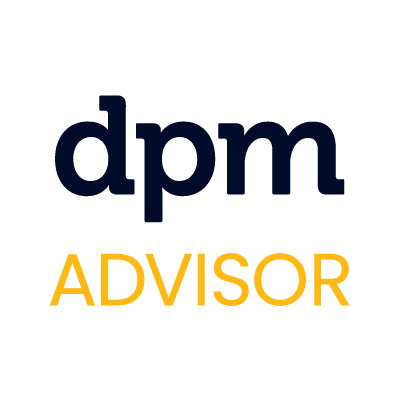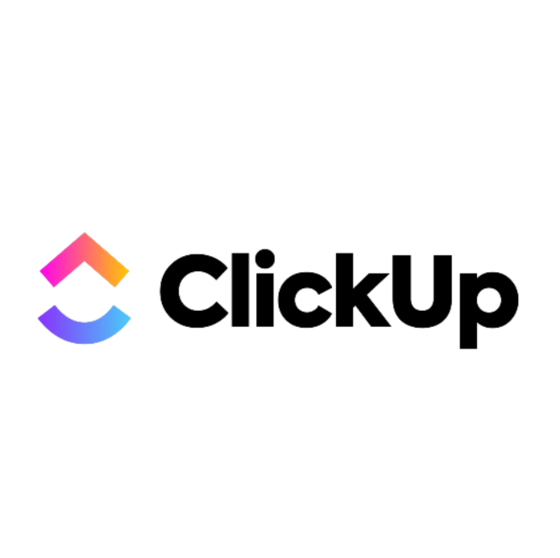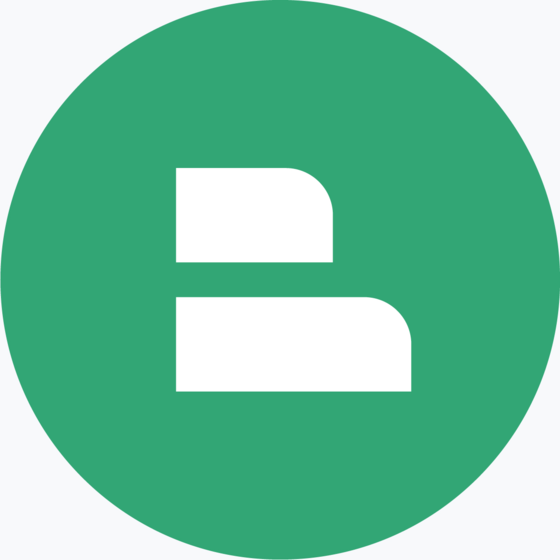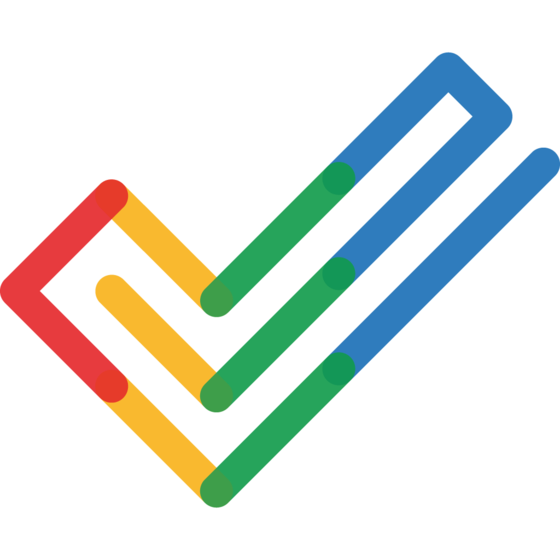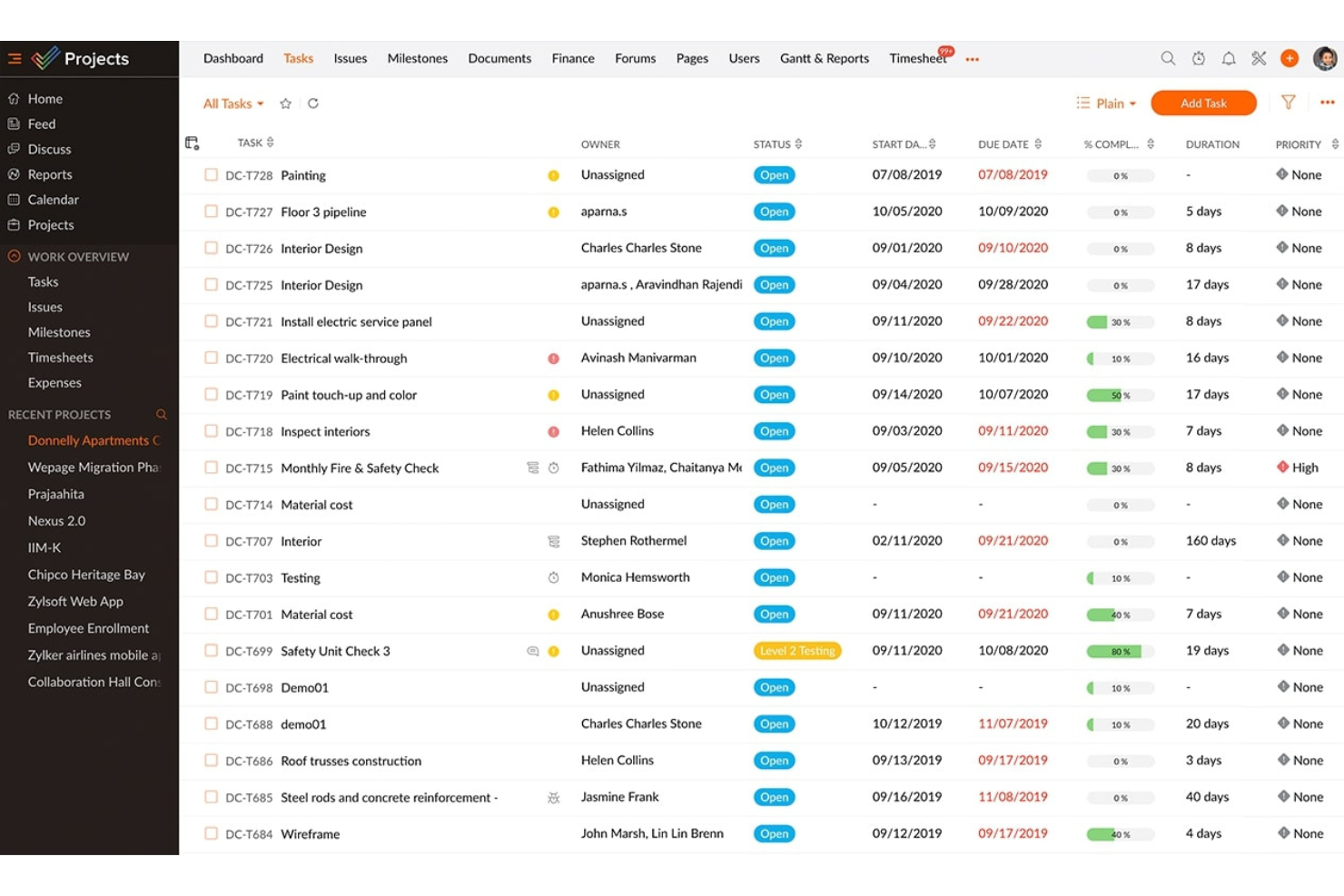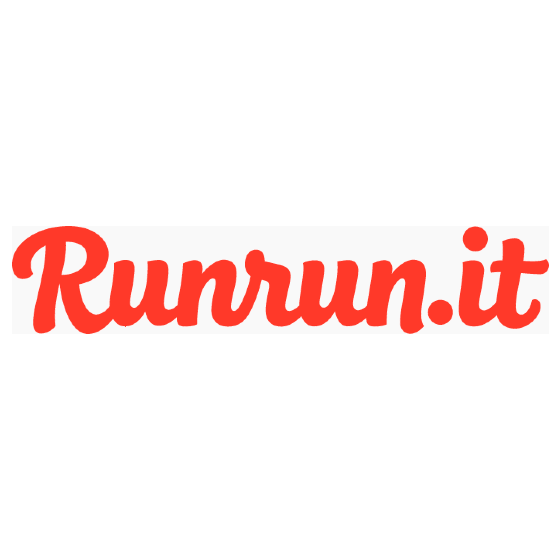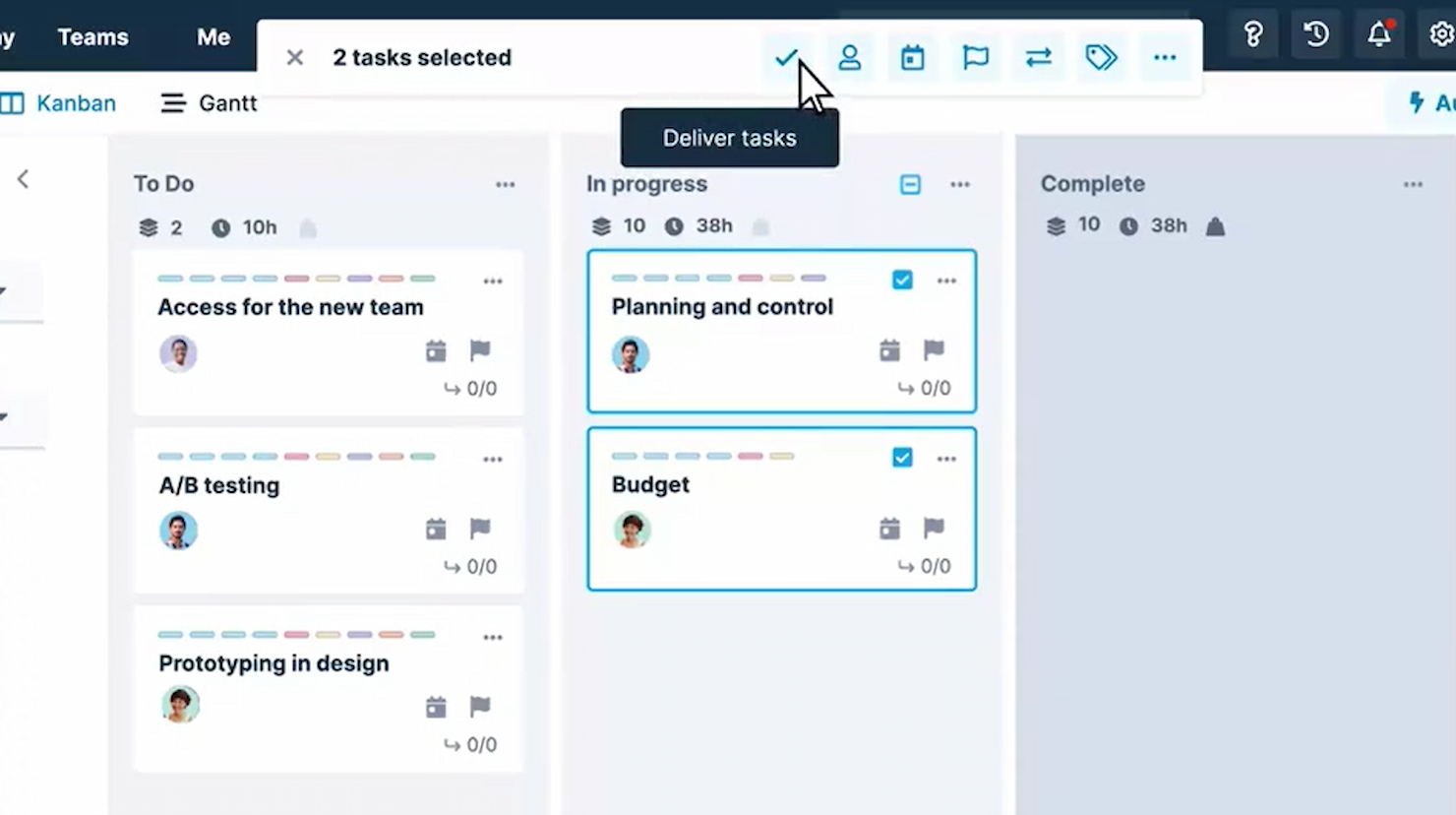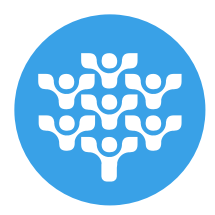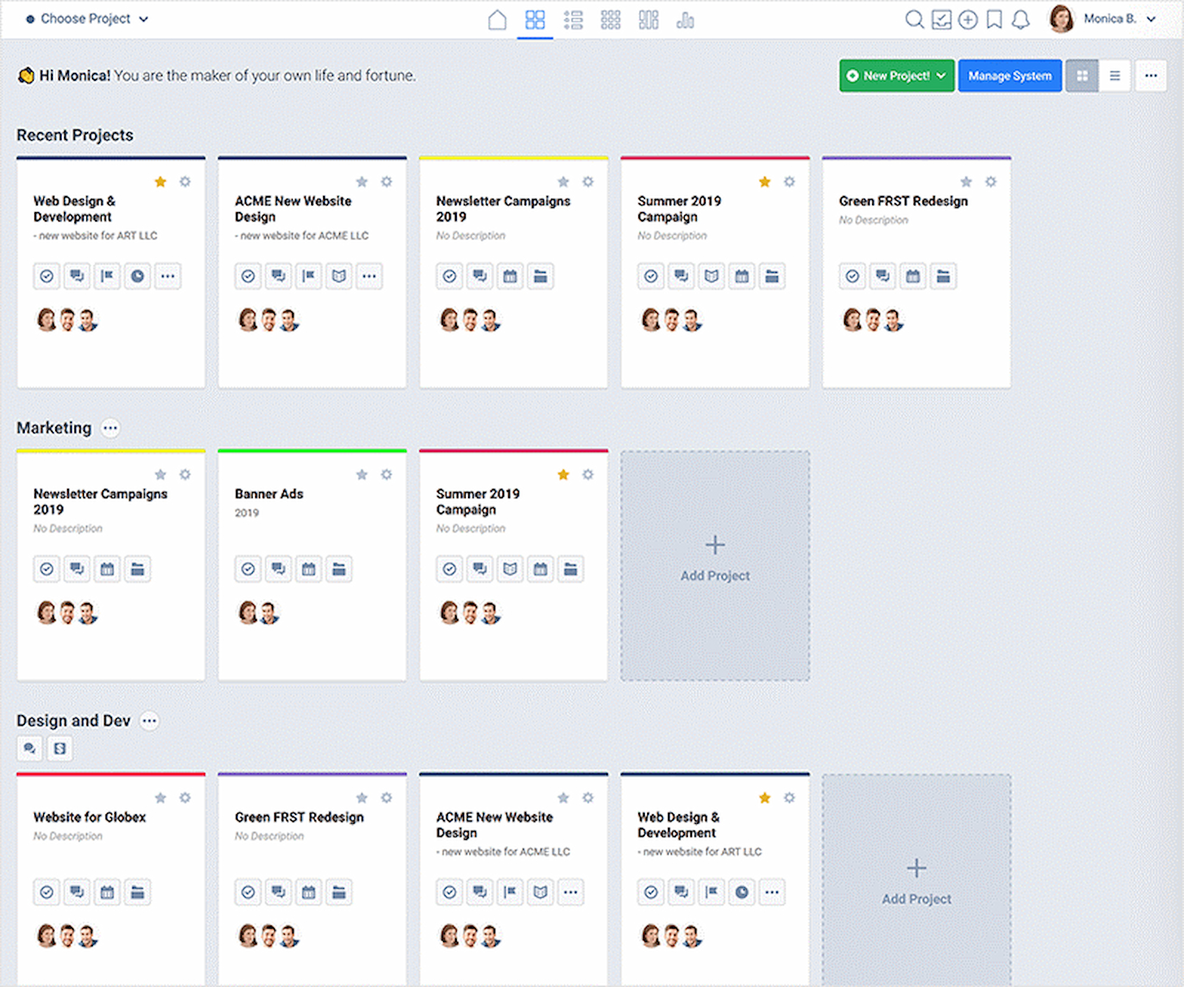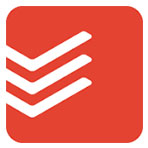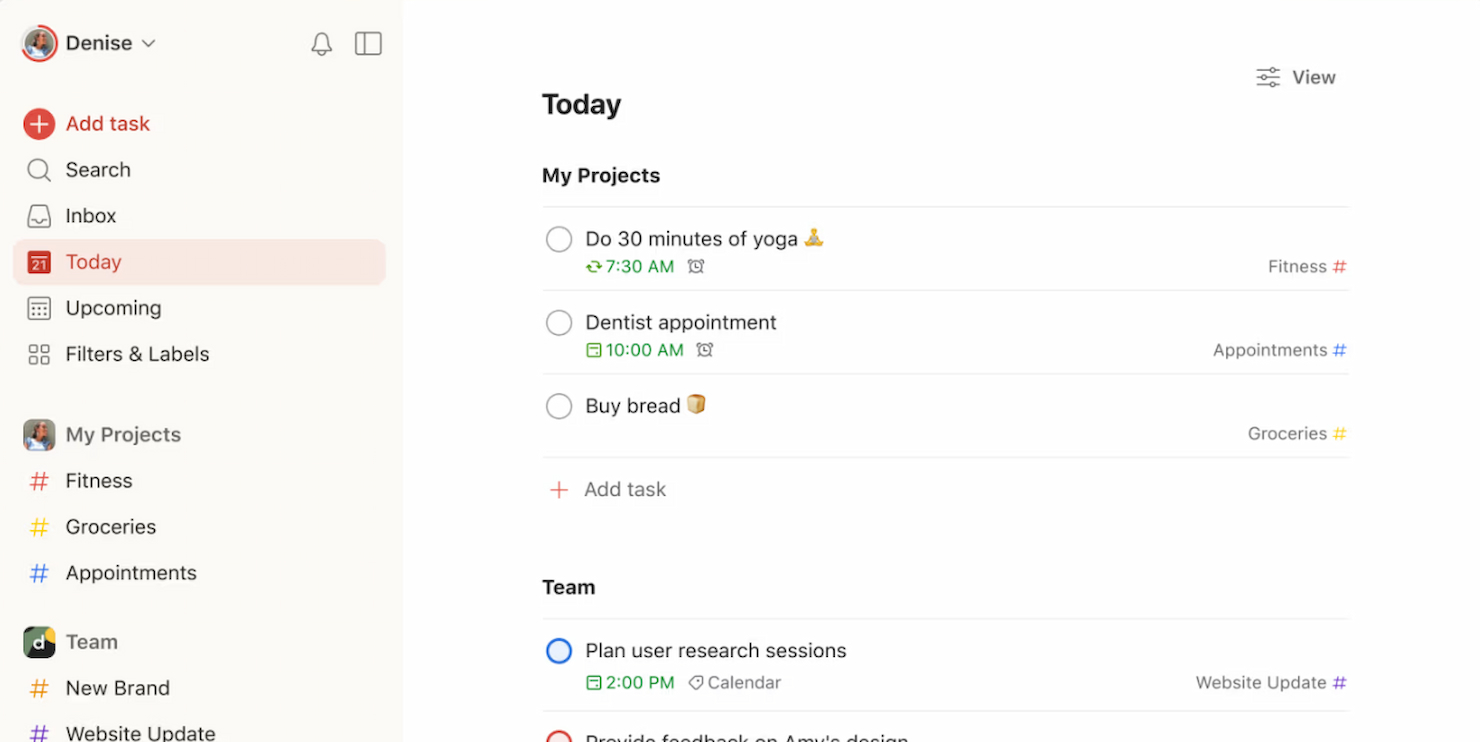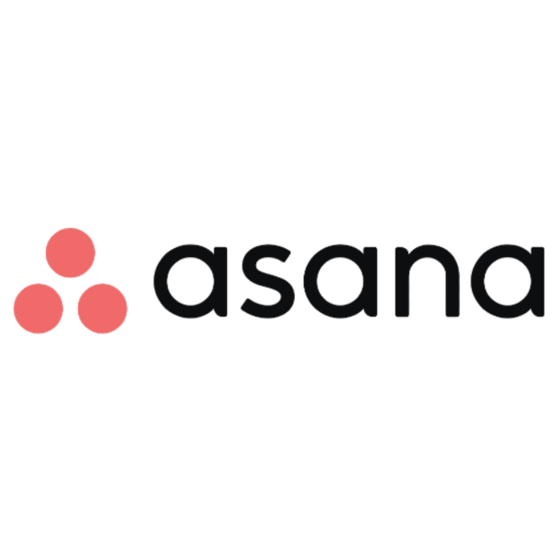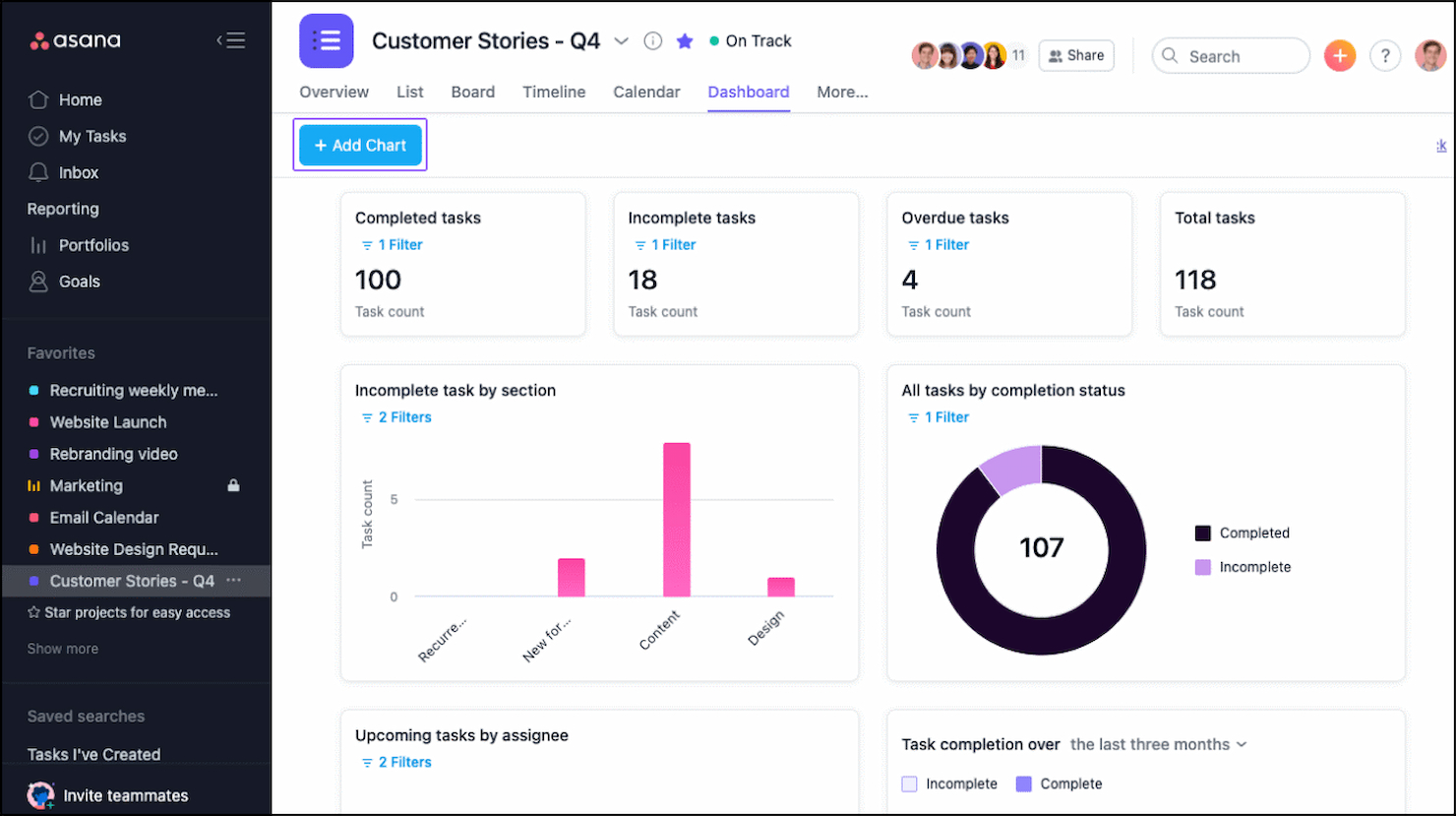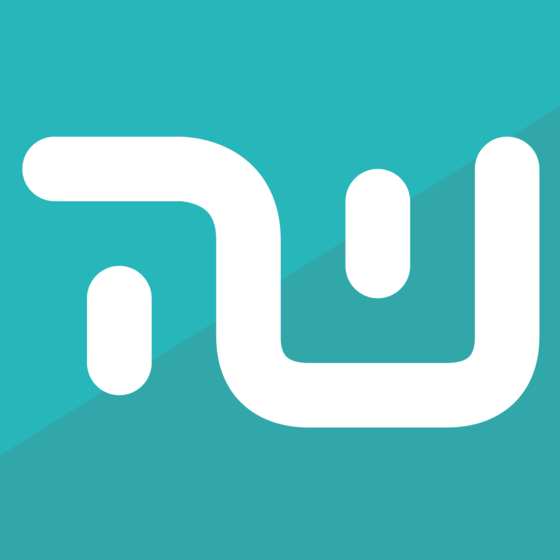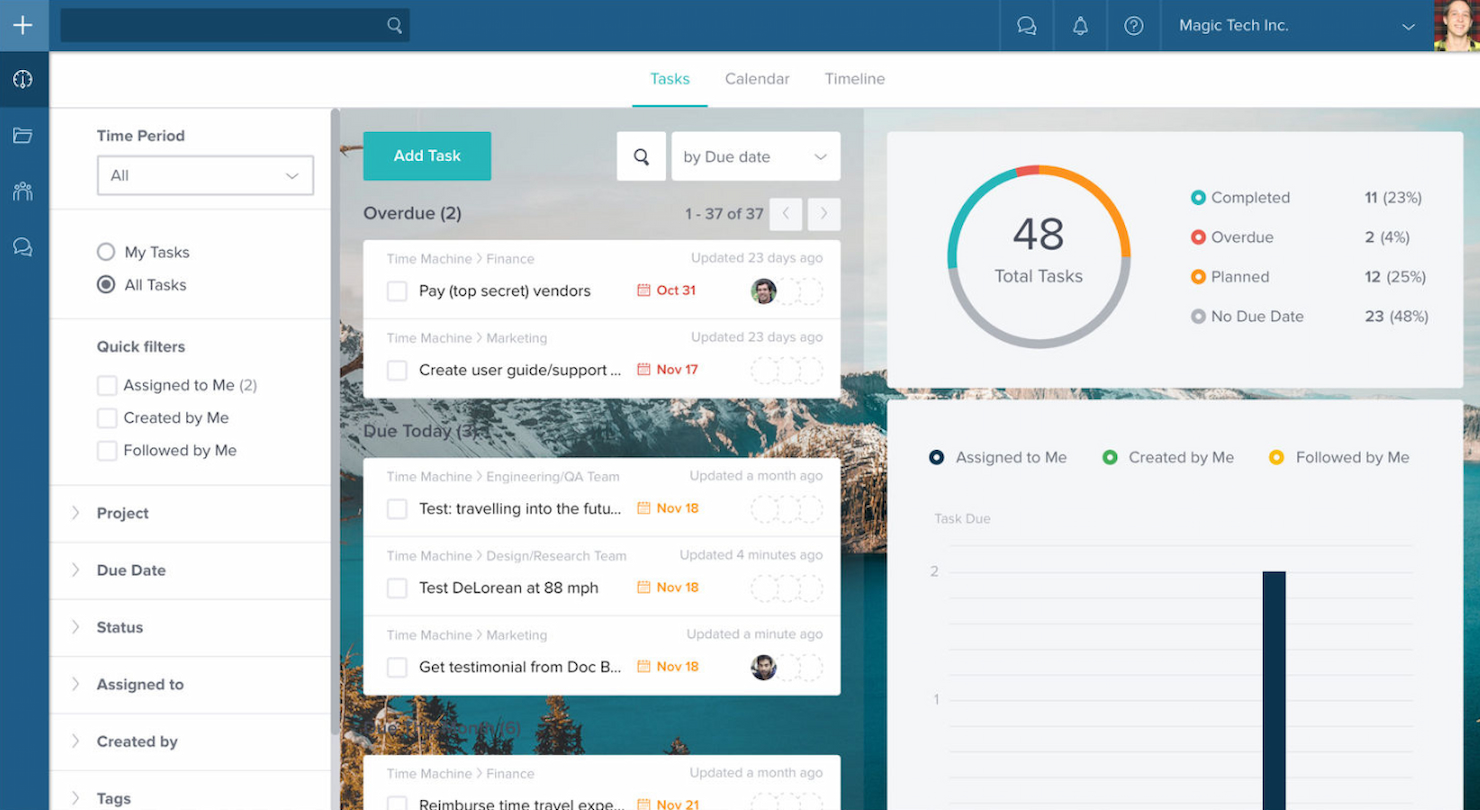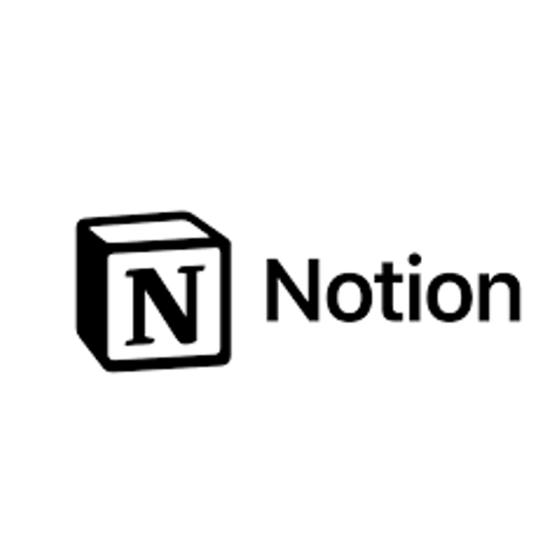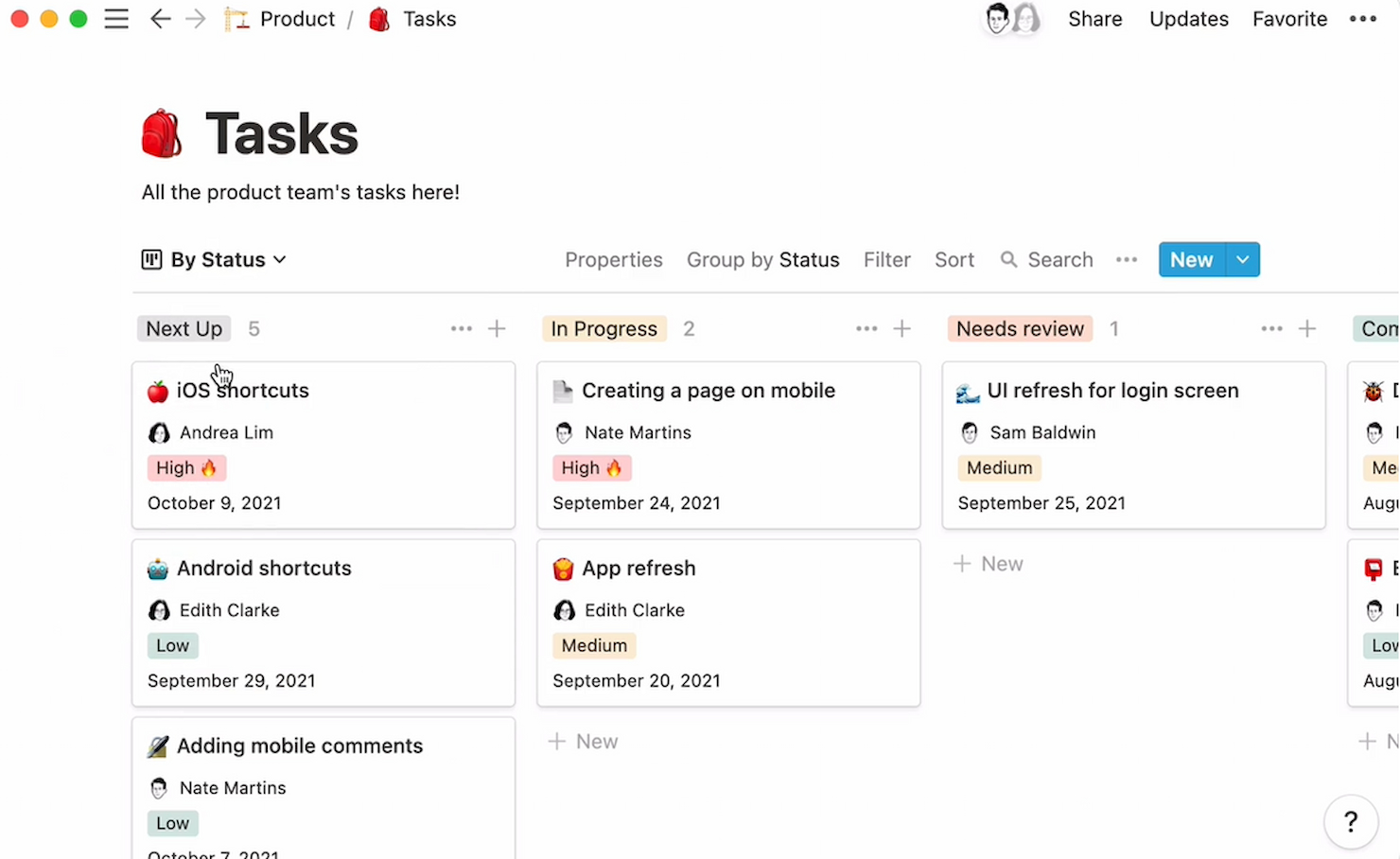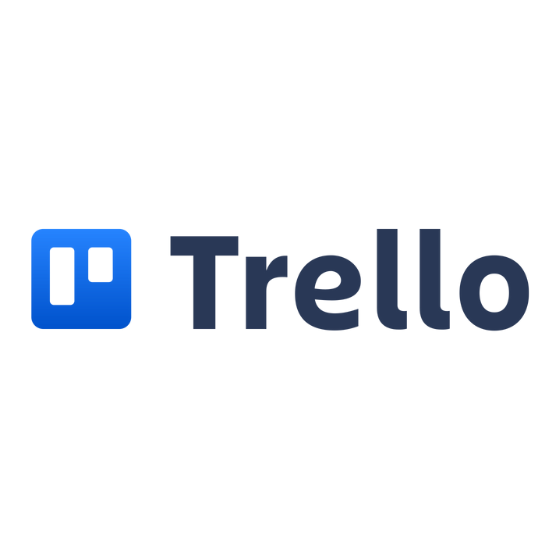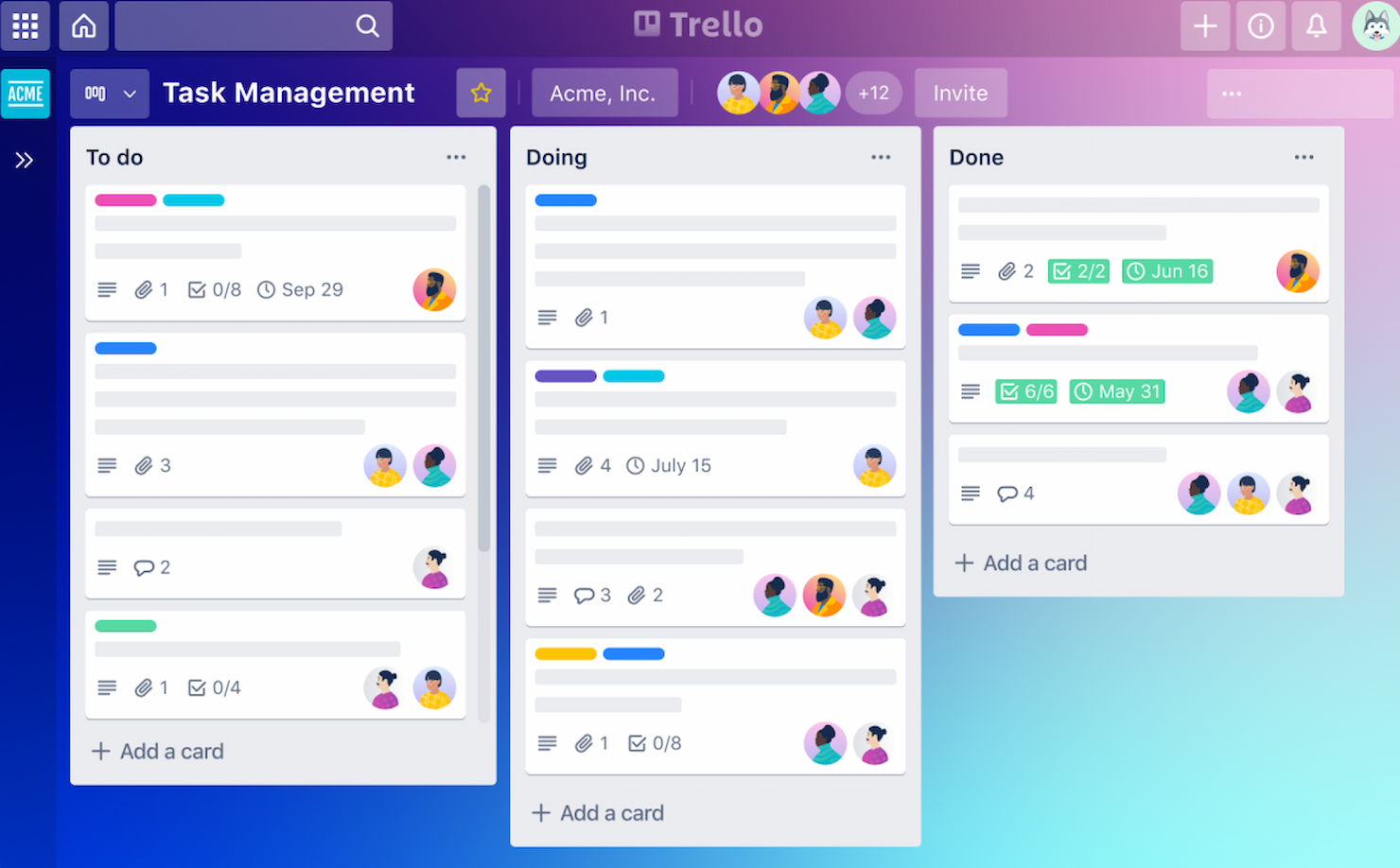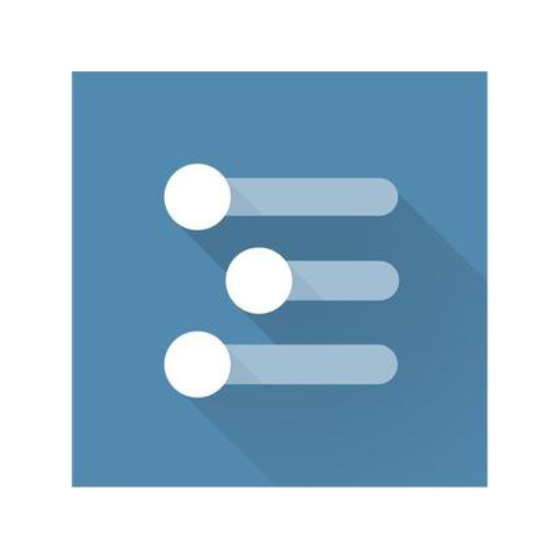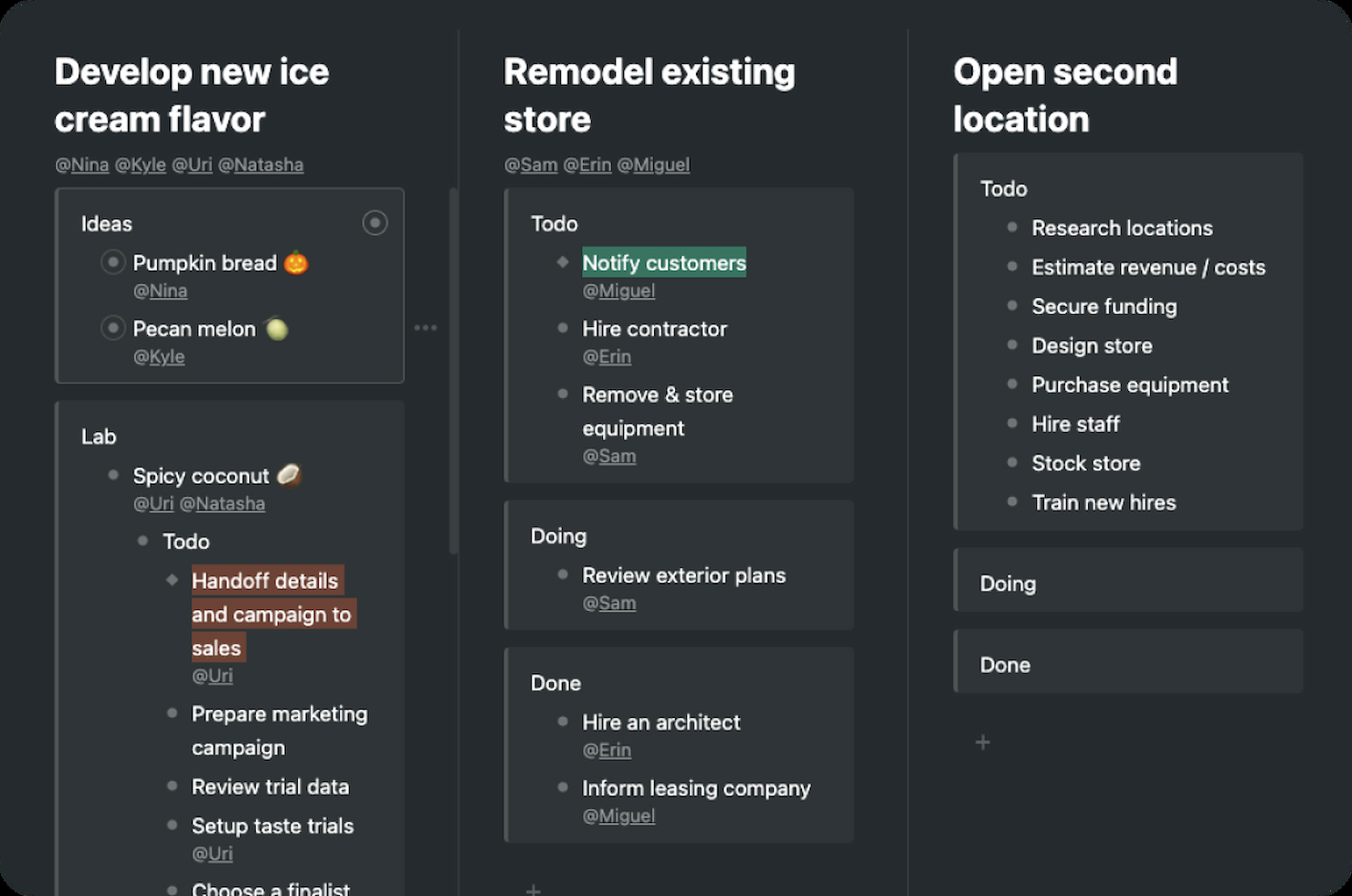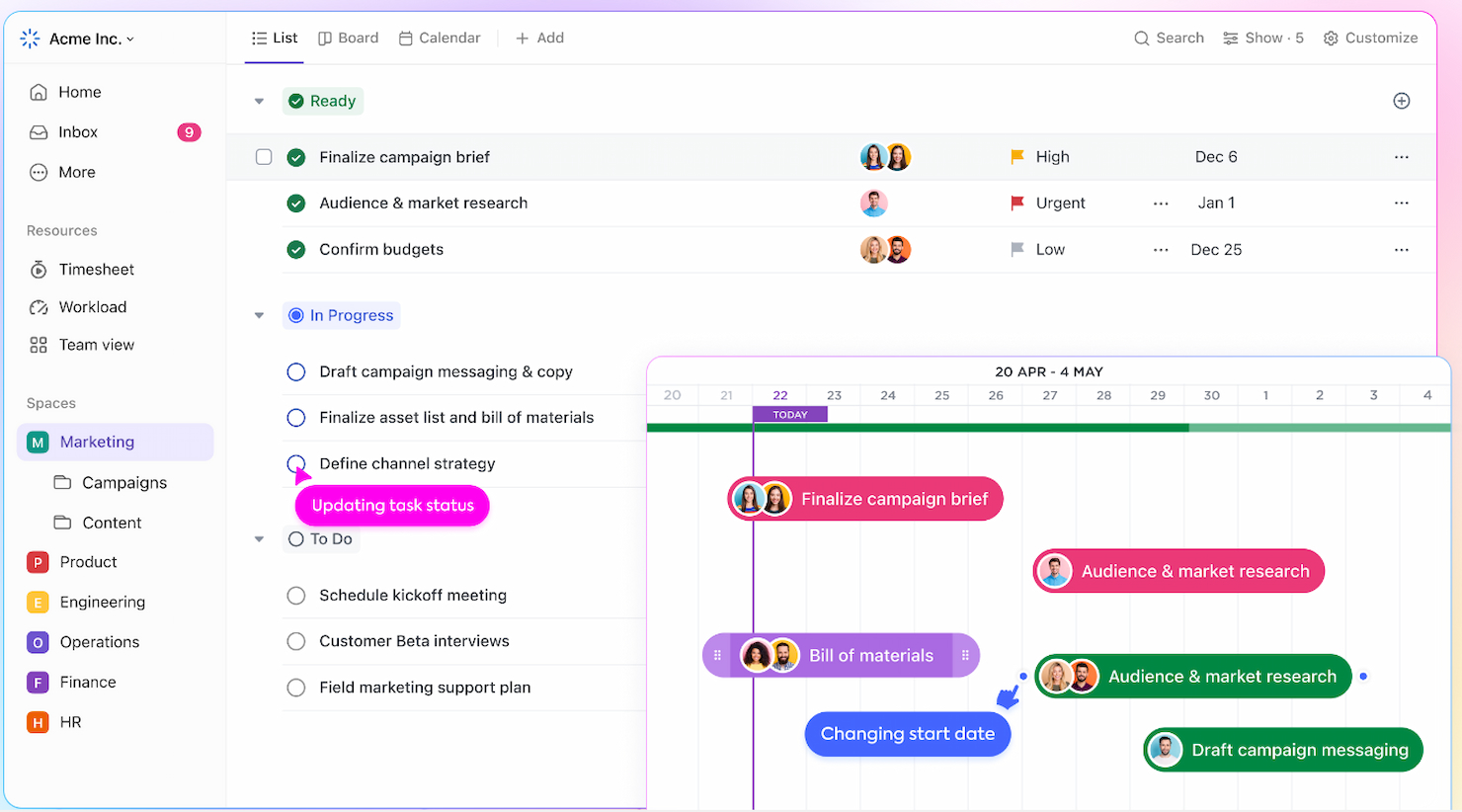10 Best Free Task Management Software Shortlist
Here's my pick of the 10 best software from the 20 tools reviewed.
Get free help from our project management software advisors to find your match.
Choosing a free task management software can be daunting. You're looking for a way to streamline your workflow and keep your team on track, but the sheer number of options can be overwhelming. I understand this unique challenge. As someone who has spent years managing digital projects, I've used a variety of productivity tools and know what works. Let me simplify the process for you. Here are my picks for the best free task management software.
Why Trust My Free Task Management Software Reviews
I’ve been testing and reviewing free task management software since 2012. As project manager myself, I know how critical and difficult it is to make the right decision when selecting software.
We invest in deep research to help our audience make better software purchasing decisions. We’ve tested more than 2,000 tools for different project management use cases and written over 1,000 comprehensive software reviews. Learn how we stay transparent & our software review methodology.
How To Choose Free Task Management Software
As you work through your own unique software selection process, keep the following points in mind:
- Feature Set: Ensure the software has the necessary features to meet your project management needs. Free task management software often comes with a basic set of features, but you need to verify if it includes task assignment, due dates, and progress tracking. For instance, if you're managing a small team, you might need a Kanban board feature to visualize workflow, which is a common pain point for teams needing to see the status of tasks at a glance.
- User-Friendly Interface: The software should be easy to use and navigate. A complicated interface can be a significant barrier for teams, especially if members are not tech-savvy. A user-friendly interface is crucial for quick adoption and to minimize the learning curve, addressing the pain point of wasting time on complex software training.
- Scalability: Consider if the software can grow with your business. Even though you are starting with a free version, it's essential to know if the software offers paid upgrades to accommodate more users or projects as your needs expand. This is particularly relevant for startups and small businesses that anticipate growth and would require a seamless transition to more robust features.
- Integration Capabilities: Check if the software can integrate with other tools you use. Integration capabilities are a significant consideration for businesses that rely on a suite of tools for operations, as it solves the pain point of having disconnected systems that do not communicate with each other, leading to inefficiencies.
- Support and Community: Look into the type of support and resources available. Free software may not come with dedicated support, so it's important to have access to a user community or a knowledge base to solve common issues. This is especially relevant for organizations that do not have an in-house IT support team and rely on community-driven solutions and documentation.
Overviews Of The 10 Best Free Task Management Software Reviews
Here are my detailed thoughts on each software on this list, including what they do best and where they struggle.
Zoho Projects is an online project management platform that provides customizable solutions for businesses of all sizes, offering features such as task management, automation, time tracking, team collaboration, and issue tracking. Its ability to customize projects, automate tasks, and integrate with other Zoho apps and third-party apps makes it ideal for dynamic teams looking to increase productivity and improve collaboration.
Why I Picked Zoho Projects: I chose Zoho Projects for its customizable platform. It allows users to create personalized fields, layouts, statuses, and workflows tailored to their specific needs, making it highly adaptable for various project requirements. Users can also manage tasks through various views such as Gantt charts, Kanban boards, and list views, which help in visualizing project timelines and dependencies.
Standout features & integrations:
Zoho Projects standout features include task creation and assignment and drag-and-drop task automation that allows users to automate workflows by creating blueprints that define the sequence of tasks and actions. It also offers time tracking of billable and non-billable hours and communication tools like chats, feeds, and forums.
Zoho Projects integrates with tools such as Slack, Microsoft Teams, Google Drive, Dropbox, OneDrive, GitHub, Bitbucket, Zapier, Basecamp, Evernote, Microsoft Outlook, Google Calendar, Microsoft Project, Trello, Jira, Asana, Zendesk, Mailchimp, and other Zoho apps.
What’s free: Up to 3 users, 2 projects, and 5GB of storage space.
Pros and cons
Pros:
- Extensive customization options
- In-app time tracking features
- Good communication tools
Cons:
- Mobile app could be more robust
- Free plan is limited in features
Runrun.it is a tool designed to optimize team management and productivity by tracking work performance comprehensively. As a project management software, it helps organizations align their tasks, projects, and communications within a single platform.
Why I Picked Runrun.it: I chose Runrun.it for its robust set of features that prioritize transparency and efficiency in team management, distinguishing it from other project management tools. It stands out due to its specific focus on performance tracking, which is essential for teams looking to improve productivity and accountability.
Standout features & integrations:
Runrun.it’s standout features include automatic time tracking, which eliminates the need for manual timesheet entries and provides precise control over project timing and budgeting. The dashboard offers a real-time view of all tasks and projects, highlighting priorities and deadlines, which facilitates better task management.
Runrun.it integrates with tools such as Slack, Google Calendar, Google Drive, Dropbox, Box, Trello, Jira, Zendesk, Salesforce, and GitHub, and more, enhancing its project management, communication, and development.
What’s free: Up to 5 users and 20 boards.
Pros and cons
Pros:
- Customizable dashboards allow for personalized setups that cater to specific project needs and user preferences
- Detailed analytics provide insights into team performance, helping identify productivity bottlenecks
- Comprehensive time tracking that automates timesheet processes and enhances accuracy in project management
Cons:
- Limited integrations compared to some competitors, which might require additional tools or manual bridging for certain functionalities
- Annual billing can be a significant upfront cost, particularly for smaller organizations
- Requires a minimum of five users, which may not be ideal for very small teams or individual users
Freedcamp is a versatile project management platform. It excels in accommodating an unlimited number of users and projects at no extra cost.
Why I Picked Freedcamp: I selected Freedcamp for inclusion due to its unique offering of unlimited users and projects, distinguishing it from other task management software. It's particularly well-suited for businesses that anticipate growth, as it eliminates the need to upgrade to more expensive plans or switch platforms as the number of users or projects increases.
Standout Features & Integrations:
Freedcamp’s standout features include task lists, subtasks, Gantt charts, Kanban boards, a calendar view, issue tracker, time tracking, and invoicing.
Freedcamp integrates with tools such as Google Drive, Dropbox, OneDrive, Zapier, Google Calendar, Outlook Calendar, Apple, Calendar, Toggl, Clockify, Slack, and more, enhancing its utility across various workflows and teams.
What’s free: Unlimited Projects, tasks, storage, and users. Some feature limitations.
Pros and cons
Pros:
- Flexible integrations with other tools
- Comprehensive set of project management features
- No limits on users or projects
Cons:
- Interface may have a learning curve for new users
- Monthly billing option is more expensive
- Advanced features locked behind higher-tier plans
Todoist simplifies task management with its straightforward to-do lists. It's best for effortlessly organizing daily tasks and personal projects.
Why I Picked Todoist: I selected Todoist for the list because of its focus on simplifying task management. It stands out for its ease of use and minimalistic design, which is ideal for individuals who need a no-frills solution for managing their to-dos. I determined Todoist is best for simple to-do lists due to its core functionality that allows users to quickly capture and organize tasks, making it a practical choice for personal productivity.
Standout Features & Integrations:
Todoist’s standout features include task scheduling, recurring due dates, and priority levels. It also provides a satisfying sense of accomplishment with its visual progress tracking.
Todoist integrates with tools such as Google Drive, Slack, Zapier, Dropbox, Amazon Alexa, and Gmail, among others, making Todoist a versatile tool that fits into various workflows.
What’s free: Up to 5 projects.
Pros and cons
Pros:
- Broad range of integrations
- Effective task prioritization system
- Simple and clean interface
Cons:
- Pro and Business features come at a cost
- No time tracking without third-party integrations
- Basic functionality in the free tier
Asana is a digital project management tool designed to improve team collaboration and work management. It is particularly effective for task prioritization, ensuring important tasks are addressed promptly.
Why I Picked Asana: I selected Asana for its exceptional ability to help teams prioritize and manage tasks efficiently, distinguishing it from other task management software. Asana is best for task prioritization due to its intuitive design that allows for easy sorting and prioritizing of tasks, which is crucial for teams to meet their most pressing deadlines and objectives.
Standout features & integrations:
Asana’s standout features include task and project creation, timeline views, workload management, and automation rules. These tools help teams plan and execute projects with clarity and precision.
Asana integrates with tools such as Slack, Google Calendar, Dropbox, GitHub, Salesforce, Microsoft Teams, Zapier, and more, facilitating a connected workflow.
What’s free: Unlimited tasks and up to 10 collaborators.
Pros and cons
Pros:
- Advanced features for project planning and tracking
- Extensive integration options with other tools
- Intuitive interface for task prioritization
Cons:
- Some learning curve for new users to fully utilize all features
- Can be expensive for larger teams or advanced needs
- Premium features require a paid subscription
Taskworld is a project management tool that streamlines tasks with visual boards. It's recognized for its visual task boards, which enhance project management and tracking.
Why I Picked Taskworld: I selected Taskworld for its emphasis on visual organization, which is crucial for maintaining oversight of complex projects. It is best for visual task boards as it provides a clear, visual layout that helps teams visualize workflows and stay on top of their tasks.
Standout features & integrations:
Taskworld's standout features include visual task boards, project timelines, and advanced analytics, which are essential for managing tasks efficiently.
Taskworld integrates with tools such as Google Calendar, Google Drive, Dropbox, Box, Outlook, Slack, Zapier, built-in chat, file management, and more, enhancing team collaboration.
What’s free: 1 user, unlimited active projects.
Pros and cons
Pros:
- Advanced analytics for monitoring project performance
- Built-in chat for streamlined team communication
- Intuitive visual task boards for easy project tracking
Cons:
- Additional cost for more advanced features
- The starting price may be higher than some competitors
- Annual billing may not be preferred by all users
Notion is an all-in-one workspace for note-taking, task management, and collaboration. It excels in integrating notes and tasks, allowing users to seamlessly switch between them within a single platform.
Why I Picked Notion: I selected Notion for its exceptional ability to merge note-taking and task management into one cohesive system. This dual functionality distinguishes Notion from other task management software. I determined it to be best for integrated notes & tasks because it provides a versatile environment where users can manage their tasks while simultaneously accessing their notes, creating a highly efficient workflow.
Standout Features & Integrations:
Notion’s standout features include its robust note-taking capabilities, customizable task management system, and the flexibility to create a personalized workspace. Users can leverage templates, databases, and various content blocks to tailor their experience.
Notion integrates with tools such as Google Calendar, Slack, Trello, Google Drive, GitHub, Figma, Asana, Jira, Twitter, Typeform, and more, enhancing its functionality and allowing for a more connected workflow.
What’s free: Up to 10 collaborators.
Pros and cons
Pros:
- Flexible content blocks for various types of data
- Customizable workspace with templates and databases
- Integrated environment for notes and tasks
Cons:
- Lack of a detailed list of native integrations
- Potential complexity due to extensive customization options
- Higher cost for monthly billing compared to annual
Trello is a collaborative tool that organizes projects into boards. It is best for visual project tracking because it provides a clear, visual overview of tasks with its card-based boards that are easy to manage and update.
Why I Picked Trello: I selected Trello for its distinctive visual approach to task management, which sets it apart from other tools that may not offer such a clear visual representation. Trello is best for visual project tracking as it allows teams to see the progress of tasks in a highly intuitive, visual format that simplifies complex projects into manageable boards and cards.
Standout features & integrations:
Trello’s standout features include customizable boards, lists, and cards which are perfect for organizing and prioritizing projects in a flexible way. It also offers built-in automation with Butler, which can help reduce the number of tedious tasks.
Trello integrates with tools such as Slack, Google Drive, Dropbox, Box, Evernote, OneDrive, Salesforce, and more, enhancing its functionality and allowing for a more connected workflow.
What’s free: Unlimited card, up to 10 boards.
Pros and cons
Pros:
- Built-in automation with Butler
- Customizable boards, lists, and cards
- Visual and intuitive interface
Cons:
- Some integrations require a separate subscription
- Can become cluttered with too many cards or boards
- Advanced features require paid plans
Workflowy is a tool that simplifies life's complexities through an outline-based interface. It excels in outline-based planning with its unique ability to create nested lists that can expand and collapse, allowing for detailed organization of tasks and ideas.
Why I Picked Workflowy: I selected Workflowy as it is best for its distinctive outline-based system, which offers a stark contrast to the typical board or list views found in other task management software. This feature is particularly effective for breaking down complex projects into smaller, more manageable components, making it the best choice for users who prefer structured planning and organization.
Standout Features & Integrations:
Workflowy’s standout features include its infinitely nested lists, which provide a simple yet powerful way to manage tasks and notes. The tool also supports tagging, searching, and zooming in on list items, which enhances task management.
Workflowy integrates with tools such as Slack, Google Calendar, Trello, GitHub, Evernote, Asana, Zapier, IFTTT (If This Then That), Dropbox, Google Drive, and more, enhancing its outlining and note-taking capabilities, focusing on simplicity and efficiency.
What’s free: 250 monthly bullet limit (increases if you invite friends to the platform).
Pros and cons
Pros:
- Cross-platform availability for access on various devices
- Simple interface that's easy to use
- Infinitely nested lists for detailed organization
Cons:
- Lack of detailed integration list on the website
- May not be suitable for visual project management preferences
- Limited functionality in the free version
ClickUp is a comprehensive task management and productivity tool. It stands out as the best for custom task views due to its wide array of customizable options that cater to different work preferences and requirements.
Why I Picked ClickUp: I chose ClickUp for its ability to provide custom task views allowing users to tailor their experience to their specific needs, distinguishing it from other task management software. I believe ClickUp is best for custom task views because it offers over 15 different ways to view tasks.
Standout features & integrations:
ClickUp's standout features include task management with customizable tasks, docs for creating and connecting documents to tasks, goals for tracking work against strategy, whiteboards for visual collaboration, dashboards for real-time reporting, and chat for team collaboration.
ClickUp integrates with tools such as Slack, Google Calendar, Dropbox, GitHub, GitLab, Evernote, Zoom, Time Doctor, Toggl, Outlook, Microsoft Teams, and more, ensuring that every team can work in the way that suits them best.
What’s free: Unlimited tasks, unlimited collaborators. Some feature limitations.
Pros and cons
Pros:
- Comprehensive features including docs, goals, and real-time chat
- Integration with over 1,000 other tools
- Customizable task views for different work preferences
Cons:
- Some users may find the array of features overwhelming
- Advanced features require paid plans
- The free plan has limited storage capacity
Best Free Task Management Software Reviews Summary
| Tools | Price | |
|---|---|---|
| Zoho Projects | From $4/user/month (billed annually) + free plan available | Website |
| Runrun.it | Pricing upon request | Website |
| Freedcamp | From $1.49/user/month (billed annually) + free plan available | Website |
| Todoist | From $4/user/month (billed annually) + free plan available | Website |
| Asana | From $10.99/user/month (billed annually) + free plan available | Website |
| Taskworld | From $8/user/month | Website |
| Notion | From $8/user/month (billed annually) | Website |
| Trello | From $5/user/month (billed annually) | Website |
| WorkFlowy | starts from $4.99/user/month (billed annually). | Website |
| ClickUp | From $7/user/month + free plan available | Website |

Compare Software Specs Side by Side
Use our comparison chart to review and evaluate software specs side-by-side.
Compare SoftwareOther Free Task Management Software To Consider
Below is a list of additional free task management software that I shortlisted, but did not make it to the top list. Definitely worth checking them out.
Selection Criteria For Free Task Management Software
Selecting free task management software requires a careful analysis of functionality and the ability to meet specific use cases that are crucial for users. The criteria for choosing such software should align with the buyer's needs, addressing common pain points and ensuring the software is fit for its intended purpose. In my experience, both trying and researching these tools, I've identified key features that are essential for effective task management.
Core Functionality: 25% of Total Weighting Score
- Task assignment and tracking
- Deadline and milestone setting
- Collaboration and communication tools
- File sharing and document management
- Integration with other productivity software
Additional Standout Features: 25% of Total Weighting Score
- Innovative project visualization options, such as kanban boards or Gantt charts
- Unique automation features to streamline repetitive tasks
- Advanced reporting capabilities for better project insights
- Customizable workflows to adapt to various project types
- Mobile app availability for on-the-go task management
Usability: 10% of Total Weighting Score
- Intuitive navigation and user interface
- Balance between feature richness and simplicity
- Aesthetic design that enhances user engagement
- Responsive design for various device types
Onboarding: 10% of Total Weighting Score
- Comprehensive knowledge bases and FAQs
- Step-by-step interactive tutorials
- Availability of pre-made project templates
- Access to customer service via live chat or email for immediate assistance
Customer Support: 10% of Total Weighting Score
- Responsiveness and availability of support channels
- Quality of technical assistance provided
- Community forums for peer-to-peer support
- Regular updates and maintenance communication
Value For Money: 10% of Total Weighting Score
- Comparison of feature set against other free offerings
- Assessment of any hidden costs or limitations
- Evaluation of upgrade paths for future scaling
- Consideration of the long-term sustainability of the software provider
Customer Reviews: 10% of Total Weighting Score
- Overall satisfaction ratings
- Frequency of positive versus negative feedback
- Specific mentions of reliability and performance
- User testimonials on ease of use and customer service quality
In assessing these criteria, I ensure that the selected task management software not only provides the fundamental capabilities expected by all users but also stands out with additional features that can bring significant efficiency gains.
Trends For Free Task Management Software In 2024
The landscape of free task management software is evolving rapidly. Here are the pivotal trends shaping its future.
- Integration with AI and Machine Learning: Artificial intelligence and machine learning are being increasingly integrated into free task management tools. This trend is enhancing predictive analytics and task automation, making project management more efficient. The ability to learn from user behavior and predict project bottlenecks is a significant leap forward.
- Cross-Platform Accessibility: Free task management software is focusing on seamless cross-platform use. Users can now synchronize tasks across devices and platforms with minimal friction. This ubiquity ensures that project management is more flexible and accessible than ever before.
- Enhanced Security Features: As cybersecurity threats grow, free task management software is bolstering its security protocols. End-to-end encryption and two-factor authentication are becoming standard features. This trend is crucial for maintaining user trust and protecting sensitive project data.
- Real-Time Collaboration Tools: Real-time collaboration is becoming a staple in free task management software. These tools now offer live editing, chat functions, and instant notifications. This trend fosters a more dynamic and immediate teamwork environment, regardless of participants' locations.
- Customization and Personalization: Customization options are becoming more sophisticated in free task management software. Users can tailor their interfaces, workflows, and notifications to their preferences. This personalization enhances user experience and productivity by aligning the software with individual work styles.
These trends are making free task management software more intelligent, secure, and user-centric.
What Is Free Task Management Software?
Free task management software is a digital tool designed to assist individuals and teams in organizing, tracking, and completing tasks. It is utilized by a wide range of users, from freelancers to small businesses, who need to manage their work without incurring costs. The software serves to streamline task delegation, enhance accountability, and improve overall productivity.
Components of free task management software include task lists, calendars, and notification systems. These elements work together to provide a clear overview of tasks, deadlines, and progress, facilitating better planning and coordination among team members.
Features Of Free Task Management Software
When embarking on the journey to enhance productivity and streamline workflows, free task management software can be a game-changer for individuals and teams alike. Here are some of the most pivotal features to consider when selecting a free task management software.
- Task Prioritization: This allows users to rank tasks in order of importance. Understanding which tasks require immediate attention ensures that critical deadlines are met and resources are allocated effectively.
- Collaboration Tools: These features enable team members to work together seamlessly. They are essential for maintaining clear communication and ensuring that everyone is on the same page, which is vital for the success of any project.
- Time Tracking: This functionality records the amount of time spent on tasks. It is crucial for assessing productivity and helps in planning future projects with better accuracy.
- Mobile Access: Having access to the software via mobile devices ensures that you can stay updated on tasks anytime, anywhere. This flexibility is important for keeping the momentum going, even when away from the desk.
- File Sharing: This allows users to upload and share documents directly within the software. It streamlines the process of distributing information and ensures that all team members have access to the necessary files.
- Calendar Integration: This feature syncs with personal or team calendars. It helps in visualizing deadlines and planning ahead, which is key to managing time and resources efficiently.
- Automated Notifications: These alerts keep users informed about upcoming deadlines or changes. Staying informed helps prevent tasks from falling through the cracks.
- Customizable Workflows: The ability to tailor the software to fit specific project needs. Customization ensures that the tool adapts to the project, rather than the project adapting to the tool.
- Reporting Tools: These provide insights into the progress of tasks and projects. They are important for tracking performance and making data-driven decisions.
- User-Friendly Interface: An intuitive design makes it easy to navigate the software. A user-friendly interface is essential for ensuring that all team members can utilize the software to its full potential without a steep learning curve.
- Checklists: Tools used in software to list items or tasks that need to be completed, allowing users to check off completed activities.
- Kanban-style board: A visual workflow management method that uses columns and cards to represent tasks and their status within a process.
- Spreadsheets: Software that organizes data in rows and columns, often used for calculations, data analysis, and information storage.
- Assignees: The individuals or groups assigned to complete a specific task or responsibility in a project management tool.
- Drag-and-Drop: An interactive feature that allows users to select an object or section of text and move it to a different location within the interface.
- Project Tasks: Track tasks or activities that are part of a larger project, each contributing to the project’s completion.
- Roadmap: A strategic plan that outlines the vision, direction, and progress steps over time for a project or business.
- Task Dependencies: Relationships between tasks where one task's start or finish is dependent on another task’s completion.
Selecting the right free task management software can significantly impact the efficiency and success of your projects. The features listed above are not just bells and whistles; they are the core components that facilitate better planning, execution, and collaboration. By ensuring that your chosen software encompasses these capabilities, you set the stage for a more organized and productive workflow.
Benefits Of Free Task Management Software
Task management software is an essential tool for individuals and organizations looking to streamline their workflow and enhance productivity. Here are five primary benefits that potential buyers should consider:
- Cost Efficiency: Save on expenses Utilizing free task management software allows businesses and individuals to manage their tasks without the financial burden of paid subscriptions, which can be particularly beneficial for small businesses and startups operating on a tight budget.
- Ease of Access: Work from anywhere Most free task management software is cloud-based, which means users can access their tasks and projects from any device with an internet connection, facilitating remote work and on-the-go productivity.
- Improved Collaboration: Enhance team coordination These platforms often include features that enable team members to communicate, share files, and collaborate on tasks in real-time, leading to improved efficiency and teamwork.
- Enhanced Organization: Keep everything in order With features like task lists, calendars, and reminders, free task management software helps users organize their work more effectively, ensuring that deadlines are met and priorities are managed properly.
- Scalability: Grow with your needs Many free task management tools offer scalable solutions that can be customized to fit the changing needs of a business, allowing for the addition of more users or projects as the organization grows.
By leveraging these tools, users and organizations can enjoy improved productivity and collaboration, all while keeping costs low.
Free Task Management Software FAQs
Here are some commonly asked questions about free task management software.
Can I find task management software that is truly free?
Yes, there are several task management software options available that are truly free. These free versions may come with certain limitations, such as a cap on the number of users, limited storage space, or fewer features compared to their paid counterparts. However, they are still quite effective for individuals or small teams looking to manage their tasks without incurring costs.
Do free task management tools offer collaboration features?
Many free task management tools offer collaboration features such as shared boards, real-time updates, and communication tools. These features enable team members to work together on tasks, share feedback, and stay informed about project progress.
Are there any limitations to using free task management software?
Free task management software typically comes with limitations compared to paid versions. These can include restrictions on the number of users, limited storage space, fewer integrations with other tools, and basic support options. It’s important to review the specific limitations of each tool to determine if it meets your needs.
How secure is free task management software?
Most reputable free task management software providers take security seriously and implement measures such as data encryption, secure data centers, and regular security audits. However, the level of security may vary between providers, and it’s important to review their security policies and practices to ensure they meet your standards.
Can I upgrade from a free version to a paid version later on?
Yes, most free task management software options offer a clear upgrade path to paid versions. Upgrading typically unlocks additional features, more storage, increased user limits, and advanced support. This flexibility allows you to start with a free version and scale up as your needs grow.
Is free task management software suitable for large teams or complex projects?
While free task management software can be used by large teams or for complex projects, it may not be the ideal solution due to the aforementioned limitations. Larger teams and more complex projects often require advanced features, greater customization, and more robust support, which are typically found in paid versions of the software.
What Next?
Subscribe to the DPM newsletter to get regular updates when we publish fresh how-to guides and articles on digital project management topics.


